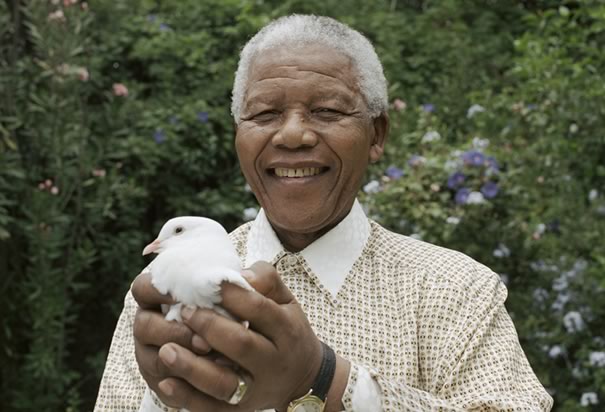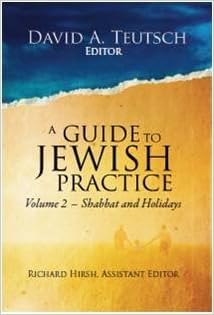In memory of Nelson Mandela and his legacy, the end of apartheid -- possibly the greatest human rights
victory of our generation -- I offer you this dvar Torah that was published in The Jewish Advocate this week. Mandela’s story is remarkably reminiscent of the
story of Joseph, who was treated as a slave by his brothers, suffered in
prison, and rose to become their leader. In this week’s portion, Vayigash, Joseph brings peaceful reconciliation
to his divided family. Though we will be observing Human Rights Shabbat next
week, Mandela’s legacy is appropriate to remember on International Human Rights
day, December 10.
May Mandela’s memory
inspire us to use our power, even when driven by pain, toward a better world.
VAYIGASH: What can happen when we truly meet one another?*
Slavery is a word that
Jews associate with the Exodus from Egypt. Slavery is a practice that Americans
believe ended with Lincoln’s emancipation proclamation. Slavery is not a word
most of us would use in the same sentence with Florida. Yet, in recent years
nine successful slavery prosecutions have led to the liberation of over a
thousand men and women in Florida who worked without pay in the tomato fields
by day and were often chained at night to prevent them from escaping.
When migrant workers
finally began to share their stories of abuse in the tomato fields, they recognized
that they were not alone. They formed the Coalition of Immokalee Workers as a
source of power to make life better for the people who pick the luscious red
tomatoes that we eat in salads and sandwiches. Not only did the CIW succeed in
putting the guilty crew bosses in jail, they discovered that they had the power
to speak to the owners of the fields and demand justice.
What did justice look
like? Was it a violent confrontation? Did they seek revenge for being sold into
slavery in South Florida? Did they demand compensation for their lost wages,
lost time with their families, abuse, or sexual harassment? Instead of revenge,
the CIW created the Fair Food Program, stopping future abuse and harassment by making
the field owners accountable for the behavior of the crew bosses.
Joseph was also once a
slave, sold by his own brothers. But now as Pharaoh’s economic czar, Joseph has
power over his brothers. Meeting his brothers in Egypt surely aroused painful memories
of being bullied by his older brothers and anger over his forced separation
from his father. When Joseph finally reveals himself to his brothers in this
week’s portion, Vayigash, he also
chooses not to seek revenge for their hateful behavior.
As our portion opens,
older brother Judah, the crew boss who had suggested killing Joseph before
agreeing to sell him as a slave, steps up to offer himself rather than imprison
Joseph’s only full brother, Benjamin. This act demonstrates to Joseph that his brothers
are now accountable for their actions. In that poignant moment, Joseph
dismisses the Egyptian attendants and reveals himself as the lost son of their
father Jacob, to the shock and consternation of the guilty brothers.
In Midrash Tanhuma, the
Rabbis imagine this moment as a mortal crisis. In response to the shocking news
that Joseph is indeed alive and standing before them, “their souls flew
out….and the Holy Blessed One performed a miracle for them and their souls
returned.” What caused this
heart-stopping moment? Disbelief? Guilt and shame? Fear of retribution? All of
the above? One miracle is that they survived the shock of hearing this news.
A second miracle can be
found in Joseph’s capacity to look his brothers in the eyes and believe that they
have indeed repented of their sin and become trustworthy men.
What occurs in the
meeting of Joseph and his brothers that enables them to reunite and reconcile?
How is it possible for someone who has been treated as a slave to face his or
her oppressors as Joseph did, and not turn into an oppressor himself?
Still hiding behind his
Egyptian disguise, Joseph proves his identity by announcing, “I am Joseph. Is
my father still alive?” (Gen. 45:3) In
that moment, Joseph regains his dignity. He is no longer paralyzed by his
childhood memories, and no longer exploits his authority as an Egyptian overlord.
In that moment, Joseph stands before his brothers with authenticity and
integrity, as one of them. Rather than dwell on their transgressions, Jacob
inquires about his beloved father, Jacob. When his brothers do not appear to
believe him, he invites them “Come forward to me….You can see with your own
eyes who is speaking to you.” (Gen. 45:4, 12)
It is only by looking
into the eyes of another that we can see the truth. When we avert our gaze,
when people become invisible, when our experience is only based on our own pleasure
or pain, division results and everyone loses. When the Florida growers could
not see how the tomato pickers were being treated, they had no reason or desire
to help them. But when presented with the claims of the CIW, they agreed to join
the Fair Food Program. Likewise, when we choose to buy tomatoes from Whole
Foods or Trader Joe’s or others who have also signed on to the Fair Food Program,
we too can see the eyes of the migrant workers, smiling in gratitude.
Despite all that his
gone before, Joseph and his brothers are united as B’nai Yisrael, the Children of
Israel. Joseph’s first act is to bring the entire family to Egypt where food is
plentiful during the famine. Whether he has forgiven his brothers is not clear;
nevertheless, he is willing to work with them for a better future for their
family.
Both sagas, the Joseph
tale and the achievements of the migrant workers of Florida, could have ended
in confrontation. Instead, both resulted in a win-win. Joseph is reunited with
his father and feeds his family. The CIW workers gain dignity and reward for
honest labor while we, the consumers, can eat fresh-picked tomatoes untainted
by the poison of slavery.
The Joseph story ended
happily, but future generations of B’nai Israel were enslaved by a new Pharaoh.
Likewise, the threat of slavery in Florida remains as long as some growers can
get away with it. To ensure that the Fair Food Program can reach every worker
in the tomato fields, the CIW continues to pursue others to sign on. The
current focus is on Wendy’s, the only major fast-food corporation that has not agreed.
To learn more about how to support the CIW and the Fair Food Campaign, and to
look into the eyes of these courageous workers, go to http://ciw-online.org/
The next time you eat a
tomato, remember Joseph.
*In The Jewish Advocate, this column was
entitled, “Two Powerful Stories End a on Happy Note”
All rights reserved, The Jewish Advocate




